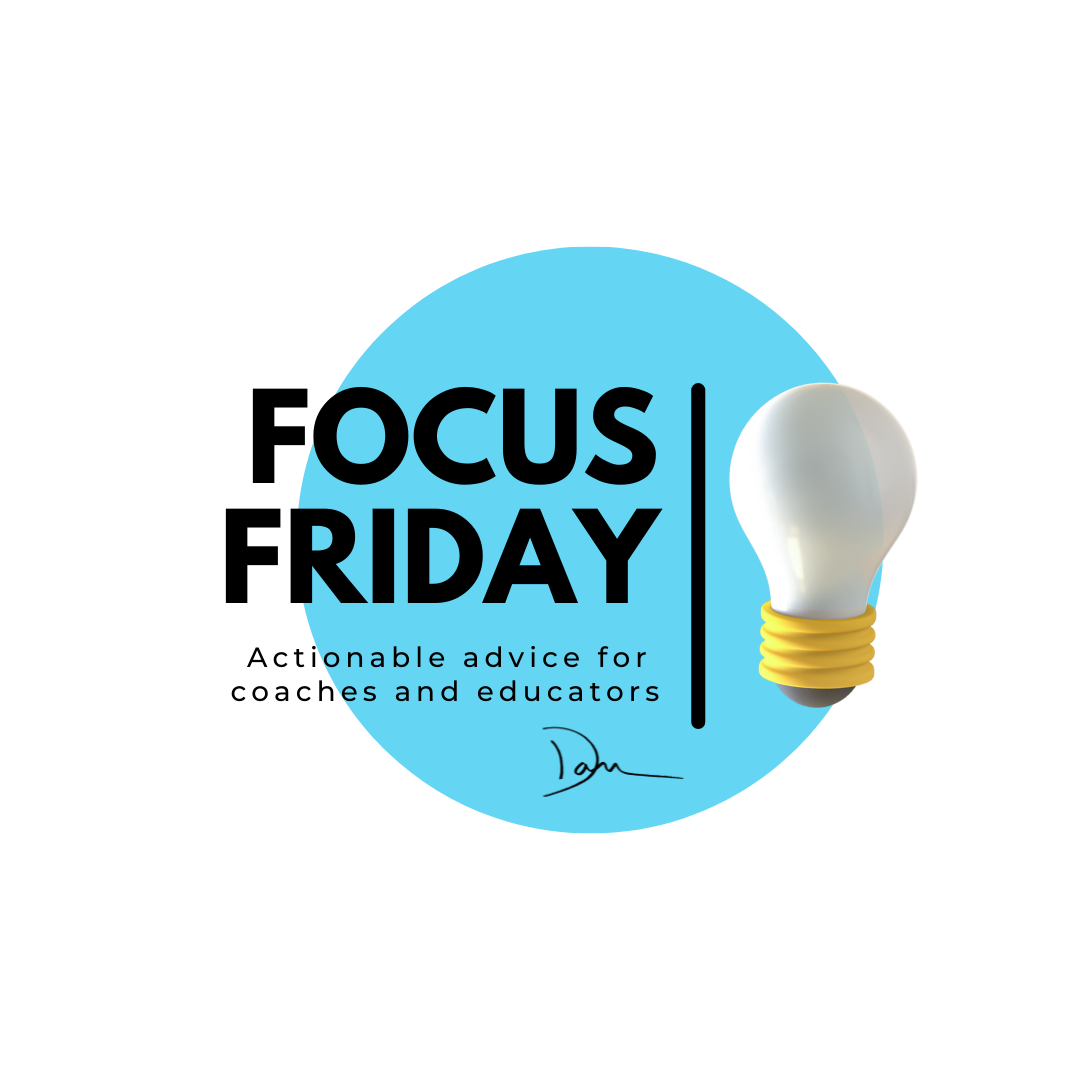In this week’s Focus Friday, I want to discuss “matching”. Whether you are a coach or an educator matching is an integral part of your process, but I feel that for a lot of teams it is not considered enough. Matching is linking the training to the situation. A lot of times, during training, we focus so much on the skill or result we are trying to achieve, that we forget that there is another part of the equation, and that is the situation in which the skill is needed. For example, in basketball, a player may be struggling with a layup technique. The coach breaks down the skill to help isolate the problem(s). They focus on the footwork, the handwork, the vision, the speed, etc. There are a lot of little parts to look at. They may even practice it a lot as a whole skill or chain of events. What I mean by that is instead of breaking it down by every little step, they train the whole skill at once. The next step is the crucial part. The is sometimes tested in a simulation. In our basketball example, the coach may add a defender to the player and ask the player to drive to the basket and score the layup. It seems simple right? We have gone from skill acquisition to skill implementation and even made it “game-like” with the defender. But did the coach actually match the training to the need?
How can we match this training to make it better? We do it by matching the skill with the real situation of its use. How many layups start from a static position, drive in a line where the defender is already waiting, and have no other options available to the shooter? I would venture to guess it is rare. There are a lot of options we are missing in this training. For example, we can start making the entry point a scramble play or a fast pass on a break to start the process. Next, there are typically other options that the shooter may have, such as passing the ball back out to the key for another shooter to take a deeper shot. We can put another shooter out there in this training and simulate an open player vs a covered player to add the decision-making process into the scenario. Lastly, we can have different defensive attack angles from the defender (coming from the side, behind, underneath, etc.). We tend to get so focused on working on the main skill, we forget about all the other little things that have an effect on the play.
In the volleyball world, I often think about how we train to serve. I see it all the time at youth camps; heck I see it all the time during pre-game warmups. Players go back to the end line and grab volleyballs as fast as they can and try to serve as many as they can in the limited warmup time they have. When, in the actual match, even with a “fast whistle” the server action is pretty slow compared to the rest of the game. We also forget about matching serving to the action after the serve. When the server is done serving a ball in a match, they do not just stand there. They move on the court, ready for defense. Yet, in practice (and warm-ups) we almost never see that. We get so focused on the act of serving, that we forget about the rest of the chain. I would rather my players take 2 full and quality warm-up serves before a match than quickly serve 10 balls that have no real similarities to how it is done in the game.
Matching is not just limited to the sports world either. When we study or practice a skill for trade or work, we often do not take the environment into consideration. A real-life example I have of this is my own experience helping at my family’s company. A few years ago, they purchased a piece of equipment that uses a computer to torch cut steel parts. As the computer guy, it was my job to get the technology side of things working. I researched and practiced the setup, the test cutting, and everything I could do before it was in place. I had pre-installed the PC and I all I needed to do was move things to the workshop and install it there. The problem was the environment of the workshop was completely different than that of my clean and quiet office. I was dealing with dust, dirt, and a lot of noise. In hindsight, I should have done the prep work out in the workshop to prepare me for it. It would have been a simple way for me to match the training to real-world installation. In the I.T. world, we see this a lot. Students go to specialized schools to gain certifications, but they struggle when they are put out in the world as technicians. It is not because they lack the knowledge, but because the training did not match the environment, they were actually working in. The pressures of a client standing over you, things not looking exactly like the book examples, or maybe the stress of a company losing money because their systems are down. I could probably write a book on how we can fix training in the I.T./Technology fields, but that is not the real purpose of this blog. I just wanted to use a not-sports example of how matching can be used in all parts of life.
The bottom line this week and my actionable request are: How can you match your training needs to the actual environment it will be required in?
Focus Friday is a blog series dedicated to creating actionable advice for coaches and educators, as well as helping start conversations and collaborations in the coaching and education space. If you have an idea for a topic, please e-mail blog@danmickle.com.


